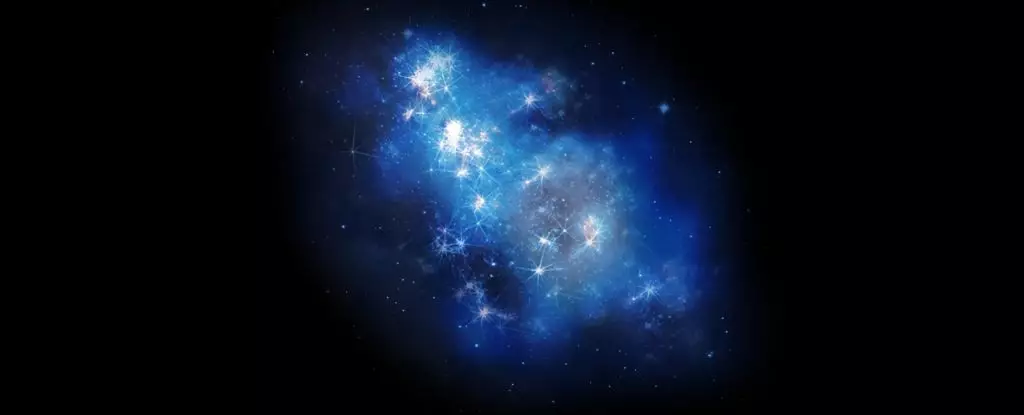In a groundbreaking discovery, astrophysicist Roberto Maiolino and his team from the University of Cambridge have detected the earliest black hole ever observed. Situated in the galaxy GN-z11, this black hole appeared a mere 400 million years after the Big Bang. This discovery challenges the traditional notion of supermassive black hole formation, pointing to the direct collapse model rather than the slow process of accretion. The light emitted by the host galaxy as it swirls towards the event horizon provides a glimmer of the early Universe.
Unveiling the Secrets of GN-z11
The galaxy GN-z11 initially captured the attention of scientists several years ago when it became the earliest galaxy ever observed. This record was subsequently broken by the James Webb Space Telescope (JWST). However, the addition of the JWST allowed Maiolino and his team to conduct a more detailed analysis of GN-z11. By studying the spectrum of light emitted by the galaxy, they uncovered the telltale signs of accretion – the process by which black holes consume matter.
The Blazing Accretion Disk
The extreme gravitational forces near a black hole’s event horizon prevent light from escaping. Nonetheless, outside this zone, matter forms a disk around the black hole and emits an intense glow of light. This luminous accretion disk outshines the entire host galaxy. Through their analysis, the researchers pinpointed this accretion disk as the source of light illuminating GN-z11. However, the rapid feeding rate of the black hole suggests a potential demise for the baby galaxy.
The feeding frenzy of the supermassive black hole in GN-z11 is so intense that it may ultimately extinguish the galaxy itself. As the black hole consumes matter, it unleashes powerful nuclear winds. Over time, these winds will blow away the star-forming gas in the galaxy, leaving behind a quiescent object devoid of new star formation. Despite being significantly smaller than the Milky Way, GN-z11’s black hole growth will ultimately be halted as it sweeps away any potential “food.”
The sheer size of the black hole in GN-z11 suggests that it could not have formed from a star-sized object in the 400 million years following the Big Bang. However, astronomers believe that massive clumps of matter collapsing under gravity may have directly formed black holes in the early Universe. Given that nearly every galaxy hosts a black hole at its center, it is likely that future discoveries using the JWST will uncover more early galaxies with black holes.
GN-z11 holds particular significance because it existed during the Epoch of Reionization – a period when space transitioned from being opaque to transparent. This transition allowed light to flow freely, uncovering the mysteries of the Universe. GN-z11’s presence suggests that black holes played a pivotal role in the ionization of matter during this era. The detailed spectroscopic analysis conducted by Maiolino and his team provides important insights into the luminosity of this hyperluminous galaxy.
As we continue to explore the cosmos, each new discovery deepens our understanding of the Universe’s origins. The detection of the earliest black hole in GN-z11 has challenged existing models of black hole formation and highlighted new possibilities. With advancements in technology, we can look forward to unraveling more secrets hidden within the depths of space and time.


Leave a Reply